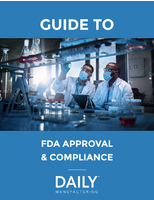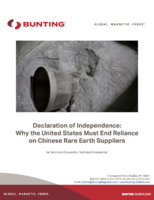Standards cover hearing protectors and corneal topography.
Press Release Summary:
Developed by Acoustical Society of America, ANSI/ASA S12.6-2008 specifies laboratory-based methods for assessing and reporting passive noise-reducing capabilities of hearing protection devices. Standard does not cover issues relevant to computational schemes or rating systems for applying hearing protector attenuation values. Developed by ANSI - Accredited Standards Committee Z80, ANSI Z80.23-2008 regulates instruments, systems, and methods used to measure shape of cornea over anterior surface.
Original Press Release:
Voluntary Standards Cover the Spectrum: from Hearing Protectors to Corneal Topography
In an effort to communicate the vital role that standards play in daily life, the American National Standards Institute (ANSI) will publish, on an ongoing basis, a series of snapshots of the diverse standards initiatives undertaken in the global and national standards arena, many of which are performed by ANSI members and ANSI-accredited standards developers. Two of the latest selections follow:
Hearing Protectors
With exposure to excessive noise a leading cause of hearing impairments, it is crucial for those Americans who work in noisy environments to protect their ears properly. Good devices are able to isolate the users' ears from unwanted sound, while preserving their ability to listen at reduced volume.
An American National Standard has been developed by the Acoustical Society of America (ASA) - ANSI/ASA S12.6-2008, Methods for Measuring the Real-Ear Attenuation of Hearing Protectors - to provide guidance to manufacturers, hearing conservation professionals, and regulatory agencies.
Using psychophysical tests conducted on human subjects, this standard specifies laboratory-based methods for assessing and reporting the passive noise-reducing capabilities of hearing protection devices. ANSI/ASA S12.6-2008 provides two fitting procedures: method A (trained subject fit) refers to the capabilities of devices fitted by trained users, and method B (inexperienced subject fit) refers to the protection attainable by informed users in workplace hearing conservation programs.
The standard does not cover issues relevant to computational schemes or rating systems for applying hearing protector attenuation values, nor does it specify minimum performance values for hearing protectors, or address comfort or wearability features.
An ANSI organizational member and accredited standards developer, ASA is a voluntary organization serving the acoustics community in all branches of acoustics, both theoretical and applied.
Corneal Topography
The human cornea delivers seventy percent of the eye's refracting power and is the primary factor in focusing light on the retina at the back of the eye. With so much at stake, eye doctors work to develop newer methods of reshaping imperfect corneas in order to improve unaided vision, and need to rely on precise parameters to achieve successful results.
An American National Standard developed by the ANSI - Accredited Standards Committee (ASC) Z80 - ANSI Z80.23-2008, Corneal Topography Systems - Standard Terminology, Requirements - regulates instruments, systems and methods used to measure the shape of the cornea over a majority of its anterior surface.
In particular, the standard defines terms utilized for the characterization of corneal shape; outlines minimum requirements for instruments and systems known as corneal topographers; and describes tests and procedures that verify the compliance of systems and instruments with the standard.
Administered by the Vision Council (VC), an ANSI member and accredited standards developer, ASC Z80 helps to ensure the quality and safety of eye care by developing standards that address equipment used by eye care professionals, as well as prescription and non-prescription ophthalmic products.




